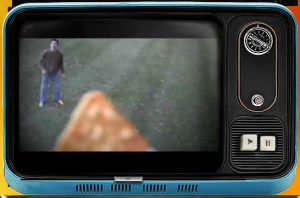(This is a guest column by Erik Bratt, director of marketing communications for ProQuo. ProQuo helps consumers eliminate junk mail, and recently hired xlntads.com.
(a new-media promotion firm with whom I work occasionally) to solicit quality video entries that help ProQuo describe its value proposition in unique and entertaining ways.
Can you really buy a viral video?
by Erik Bratt, ProQuot
Conventional wisdom says no. By its very definition, a viral video is something that can’t be bought or made, forced or manipulated. A viral video – a viral anything – just ‘happens,’ striking some type of cultural nerve that prompts people to send it around.
Levi’s ad, levi ads doing model flips featuring male models doing back-flips (literally) into their jeans. The video, which racked nearly 4 million views on YouTube alone last time I checked, never mentions Levi by name, but it wasn’t hard to guess the driving force (Male models? Jeans?). I offer a more modest case in point: Our own video contest. Eager to spread the word about our service for stopping junk mail and managing catalogs (plug: www.proquo.com), we decided to launch a viral video contest earlier this spring in hopes of creating momentum for our free offering.
To get this done, we partnered with XLNTAds.com, a Philadelphia-based company that facilitates a community of 5,000 eager and talented semi-professional videographers. This was our first good decision. XLNTAds.com knows how to run a contest, and their members are fired up about creating great content. We were also fortune to have great subject matter – who can’t work with junk mail as topic? The contest rules were simple: keep it clean, make it funny, and focus on junk mail, not ProQuo. Because we are not as big of a brand as Levi, we also asked that they at least include our URL somewhere in their video.
The carrot? $1,500 for each of the top 10 videos. The contest “assignment” was posted on April 1. One month later we had more than 160 entries. Deciding on the top 10 videos was not easy, requiring several viewing sessions and at least one company viewing party (with blind voting). We finally picked our 10 winners and created a special page for visitors to interact with them: www.proquo.com/videocontest. 
So, we had our funny videos, but what about the viral part? Instead of scrambling to post these videos ourselves, or buying space on different networks, we worked with XLNTAds.com to provide incentives to the winning creators to ‘viral-ize’ the videos on their own. We offered a tiered award structure for the creators who had the most number of views across multiple video platforms.
For the money, this was our second good decision.
We’ve been pleasantly surprised at the number of places our videos have popped up – on dozens of different video platforms, in blogs, and on web sites. At last count, we had more than 160K views on just those 10 videos (many of the runner-ups also got posted). We never could have achieved that many views on our own without paying for placements
So did we succeed in creating or buying a viral video? Not really.
We didn’t get on the front of YouTube (which requires at least 50K views) or any other video platform. We didn’t pop up in tens of thousands of emails within the span of few days saying, ‘dude, check this video out!”
What we did accomplish was to generate a large number of video views, as well as traffic and registrations to our site (made trackable from URLs placed high up in some of the video descriptions). We also provided entertaining content for our site visitors and registered users, whom we encouraged to help rate the videos
Another bonus was our engagement with the videographers themselves. We were touched by the effort that so many people and their friends put into the videos. In the end, that type of engagement and goodwill may be worth more than any viral video.
Editorial note (back to Nalts): This is a good case study, and shows a few key points:
- ProQuo could have tried doing this itself, but it would have been far more expensive and out of its core competency.
- The value to ProQuo is being assessed comprehensively- as opposed to the views and clicks.
- By leveraging xlntads creators with built audiences, Proquo had a way to reach far more potential consumers than they could have ever reached on its own.
- Finally- with time, someone searching Proquo will find these creative executions instead of a video blog by someone who wasn’t keen on the offering. So for search engines alone, it might be justified.
Thanks, Erik, for sharing your story!









